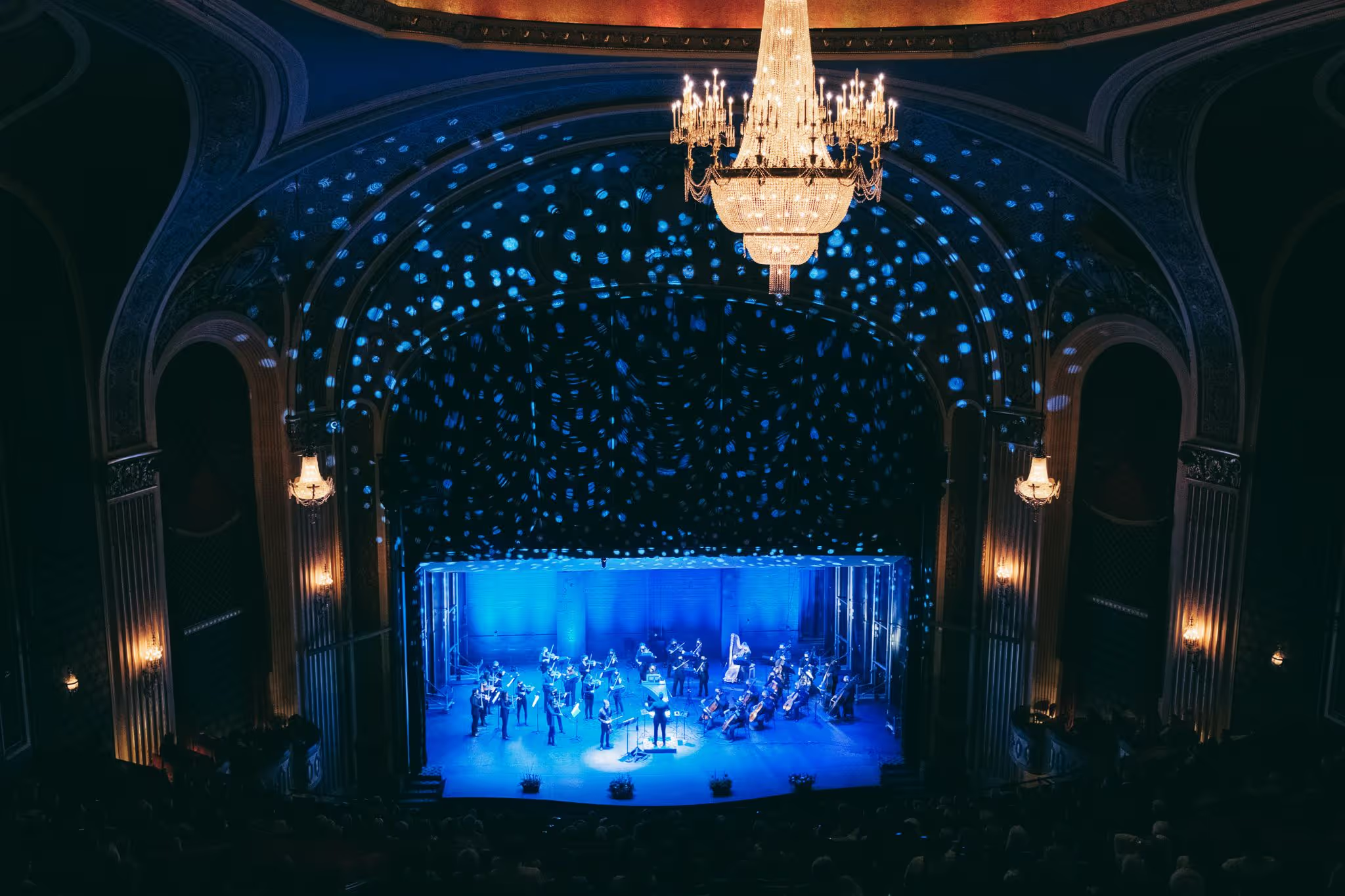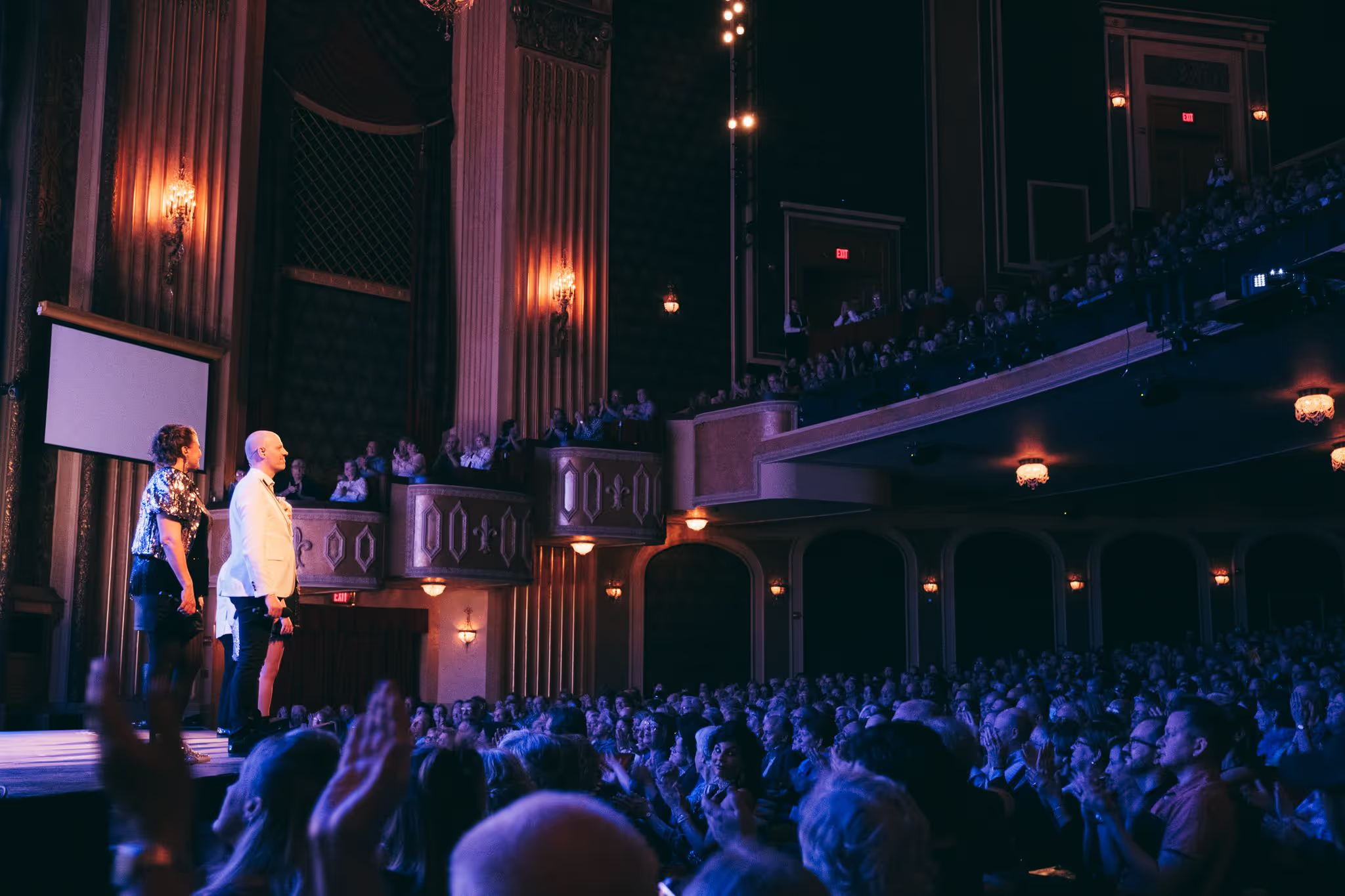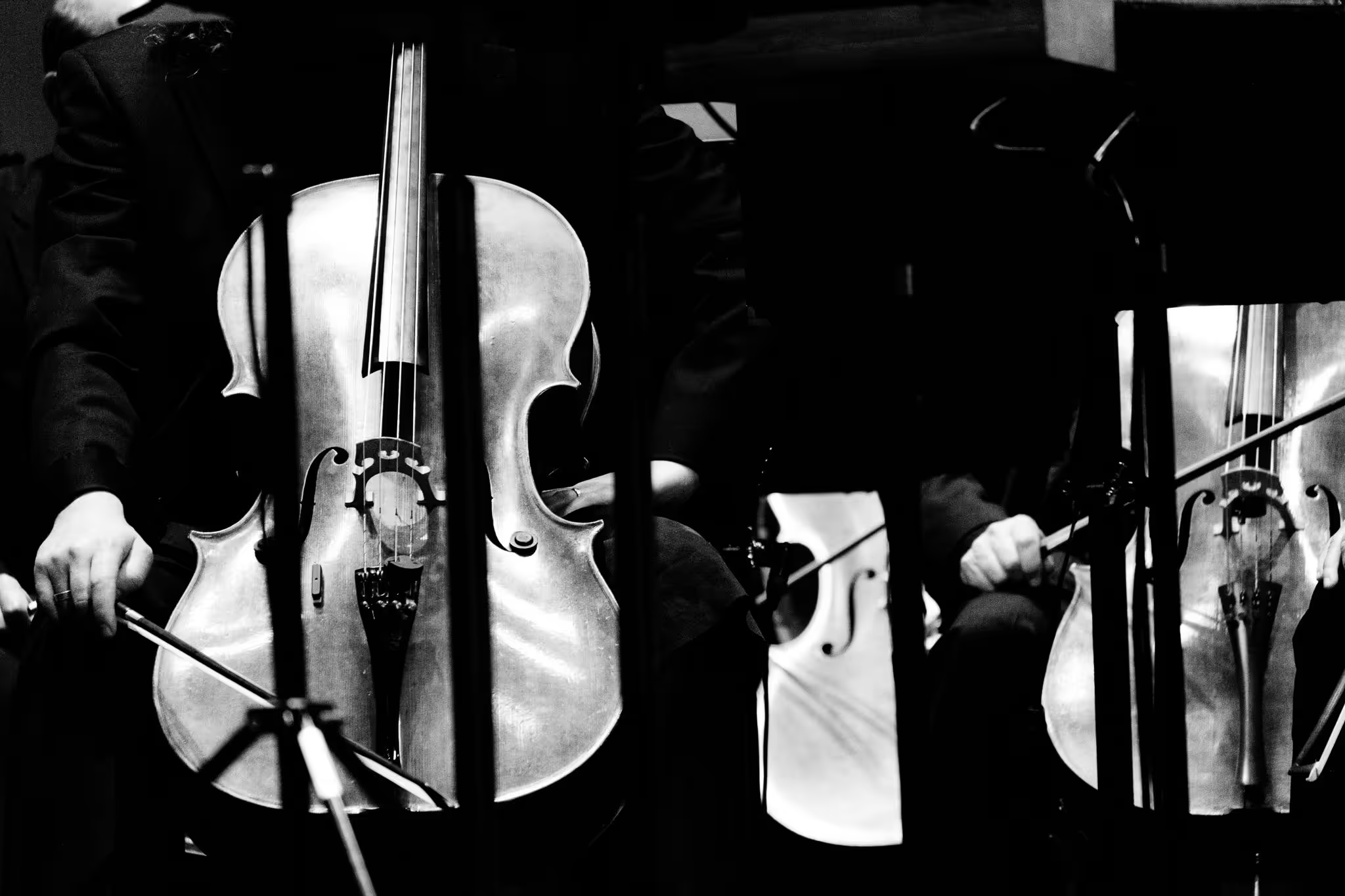
Mission & Vision
The Sioux City Symphony Orchestra nurtures and inspires the human spirit through musical excellence for the many diverse communities we serve by presenting performances and related education and outreach programs that are innovative and culturally inclusive.
The Sioux City Symphony Orchestra will become one of the most relevant and accessible regional orchestras in America. We will secure the reputation as a prominent leader in the arts by sharing our vision and advancing our mission by:
Pursuing the highest level of artistic excellence, on and off the stage.
Reaffirming our position as a dynamic leader in music education through outreach and engagement within our community.
Honoring our commitment to new music in America through performance, commissioning, and education.
Promoting our musicians and world-class artists, creating innovative programs, and requiring responsible leadership within our organization.
Devotion to being a pioneer in the world of concert presentation.
Committing to diversity and inclusion within our organization and the communities we serve.
Maintaining a well-diversified and solid financial foundation.
Upholding the highest level of ethical standards throughout the entire organization.
A Look Back At Our History
For over 100 years, the Sioux City Symphony Orchestra has been a dominant force in the cultural life of Sioux City and the surrounding tri-state area. It has evolved from a 30-piece college ensemble to a 90-member professional orchestra with an artistic ability unrivalled by metropolitan orchestras of comparable size.
The origins of the Sioux City Symphony can be traced to 1915 with the start of the Morningside College Orchestra, conducted by George Hubbard. February 27, 1916, was the first public performance by the Sioux City Symphony Orchestra. Fredrick Wick and Oliver Guy Mages filled in as conductors of the orchestra until 1923, when the orchestra featured a performance by a young, Polish-born violin soloist named Leo Kucinski, who attended the Warsaw (Poland) Conservatory, and continued his studies at Oberlin, the Cleveland Institute of Music and at Juilliard. In August 1942 the Sioux City Journal reported that “he was recognized as one of the best [conductors] in the country” – Neil Miller, SC Journal. He soon became a major influence in the musical life of northwest Iowa. For more than fifty years, Kucinski’s name was synonymous with symphonic music in Siouxland. His vision, drive, and dedication to musical excellence guided the development of the orchestra through its formative years. Additionally, Leo Kucinski was widely known as a violin soloist. In 1946 a core of symphony supporters formed the Sioux City Symphony Orchestra Association, with a board of directors responsible for development and financing. The 1950s became a decade of rapid growth and increased visibility for the orchestra, and in 1965 the Sioux City Symphony celebrated its golden anniversary with a sold-out concert in the Municipal Auditorium featuring Van Cliburn.
Leo Kucinski was sent off to the South Pacific during WWII. He was a Lieutenant in the Air Corps. While Leo was away, Henri Pensis from Luxemburg filled in at the podium for Kucinski from 1942 to 1946. Once again the Sioux City Symphony Orchestra was blessed because while Leo was away contributing to the war effort, his replacement Mr. Pensis had experience conducting the leading symphony orchestras of the nation. One season that Henri Pensis was conducting the Sioux City Symphony, which was performing at the Orpheum, he also conducted six concerts in Carnegie Hall in New York.
Leo Kucinski conducted the symphony from 1923 to 1976 when the baton was passed from Kucinski to Thomas Lewis, a professional conductor, who came to Sioux City with a national reputation as an orchestra builder. Under Lewis’ direction, the Sioux City Symphony was seen throughout the state and heard throughout the nation. In 1979 the orchestra was first chosen to participate in a National Public Radio series featuring American metropolitan orchestras. Tom Lewis also served in the U. S. Army. He was the conductor of the 7th Army Symphony. Several performances, including the 1980-81 Family Concert Series, were televised by the Iowa Public Broadcasting Network. The 1990-91 Season was the orchestra’s Diamond Jubilee and many special events, concerts, and artists, including Itzhak Perlman, were featured in celebration of the 75th anniversary. In 1995, the SCSO welcomed Stephen Rogers Radcliffe as only the fourth full-time Music Director and Conductor in the Orchestra’s history. His energy has proven to be contagious throughout the organization, with dramatic growth in the organization's artistic and educational capacities.
On September 15, 2001, the Symphony celebrated the opening of its glorious new home, the beautifully restored historic Orpheum Theatre. Two weeks later, on September 29, the Orchestra’s first full concert in its new home was presented with another sold-out performance featuring Van Cliburn. In 2005, Xian Zhang was named as Music Director and Conductor of the Sioux City Symphony. Xian assumed the podium beginning with the 2005-2006 Season on September 17, 2005.
In the spring of 2009, Ryan Haskins became the sixth Music Director and Conductor in symphony history. The Sioux City Symphony is truly a regional orchestra, drawing its personnel and audience from within a 90-mile radius of Sioux City. Many of the orchestra’s musicians are from nearby educational institutions, including Morningside College in Sioux City, Wayne State College in Wayne, Nebraska, and the University of South Dakota in Vermillion. The musicians travel from as far away as Sioux Falls, South Dakota; Kansas City, Missouri; Omaha, Nebraska; Storm Lake, Iowa; Chicago, Illinois; Indianapolis, Indiana; Cleveland, Ohio; and Eau Claire, Wisconsin.
Guest artists have included Marian Anderson, Isaac Stern, Benny Goodman, Victor Borge, Roberta Peters, Andre Watts, Doc Severinsen, Robert Merrill, Joshua Bell, José Feghali, Frederica von Stade, Itzhak Perlman, Leon Fleisher, Peter Serkin, Dame Kiri Te Kanawa, Sir James and Lady Jeanne Galway, and Sarah Chang among others.
PAST PRESIDENTS
The Sioux City Symphony Orchestra has a proud history. Our Board of Directors has been led by a tremendous list of past presidents. All dedicated to the Sioux City community and the mission and vision of the Sioux City Symphony…
1946 - 1947 A.B. DeHaan, Sr.
1948 - 1953 Wiley Mayne
1953 - 1956 Kathryn Graham
1956 - 1957 Donal Sullivan
1957 - 1959 Howard L. Johnson
1959 - 1961 Nelontine Maxwell
1961 - 1963 Harry S. Holtze, Jr.
1963 - 1964 E.A. Evans
1964 - 1966 Ken C. Wayman
1966 - 1968 Paul Snyder
1968 - 1969 Robert R. Eidsmoe
1969 - 1971 William “Bud” Ziebell
1971 - 1975 David Albert
1975 - 1977 Stanley W. Evans
1977 - 1979 James Yanney
1979 - 1981 Hale Oliver
1981 - 1983 Mary Jo Davey
1983 - 1985 Dr. Charles Nevaril
1985 - 1987 Robert Peterson
1987 - 1989 James H. Warner
1989 - 1991 Rosemary Sheehan
1991 - 1992 Michael Zimmerman
1992 - 1994 Thomas Borchert
1994 - 1996 Lance Lehmberg
1996 - 1998 Kent Handel
1998 - 2000 Sandra Bainbridge
2000 - 2002 Rusty Clark
2002 - 2004 David Krogh
2004 - 2006 John Daniels
2006 - 2008 Charese Yanney
2008 - 2010 Daniel D. Dykstra
2010 - 2012 Peter Thoreen
2012 - 2014 Eunice Acker

Education
Youth Orchestra Camp InformationGallery
Music is the way to express your emotions and the thing you enjoyed most in life – it’s one of the most important parts of our lives.





